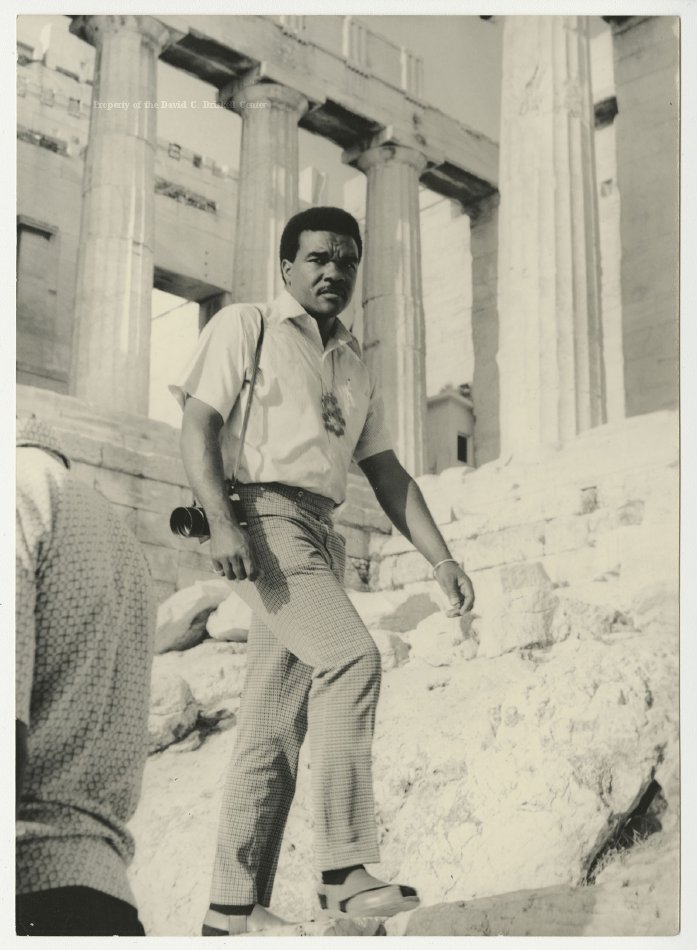In 1962, David C. Driskell received his Master of Fine Arts degree (MFA) from Catholic University in Washington, D.C. His thesis advisor and professor of painting, drawing, and composition was Nell Sonnemann who introduced Driskell to the theory and philosophy of art that helped shape his view of the connection between art and spirituality. Biblical subjects would emerge in Driskell's artwork during the 1960s, influenced by his time at Catholic University, but also his upbringing as the son of a minister. 1962 also saw Driskell's return to Howard University as a faculty member. His students at Howard included the artists Mary Lovelace O'Neal, Stephanie Pogue, Sylvia Snowden and Lou Stovall, and artist and musician Lloyd McNeill. Throughout his tenure at Howard University (1962-1966), Driskell organized the exhibition program at the Barnett Aden Gallery in Washington, D.C.
Driskell spent the summer of 1964 touring Europe, including visits to Greece and Spain. He also studied museology and art history at the Rijksbureau voor Kunsthistorische Documentatie in The Hague. Mary Beattie Brady, director of the Harmon Foundation, had urged Driskell to visit European archives and his time in the Netherlands greatly informed his development of an archive of African American art.
Driskell joined the Department of Art at Fisk University in Nashville, Tenn., as a full professor and chairman in 1966. Driskell was offered the position by Aaron Douglas, a painter, illustrator and major figure in the Harlem Renaissance, who founded the department in 1937 and had served as chairman for three decades. At Fisk, Driskell expanded the faculty to include the artists Earl Hooks, Keith Morrison, and Stephanie Pogue. He also recruited filmmaker Carlton Moss and photographer Robert Sengstacke to create a film program, enabling students to produce their own films.
In December of 1969, Driskell made his first trip to Africa. His travel to the continent, along with exposure to Fisk's large collection of African art, would extend his scholarship in the field of African art and have a profound influence on his artwork in decades to come.
